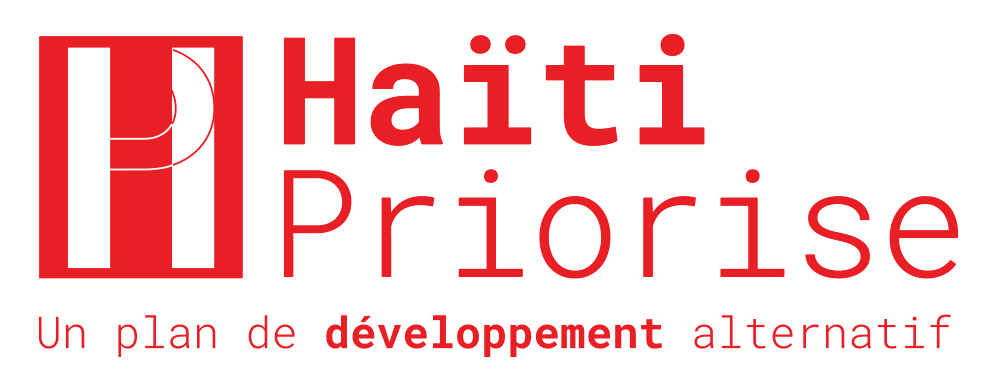Haïti Priorise: Workforce Equality, Torchenaud
The Problem
In Haiti, social distortions and inequalities that rule the labor market prevent women from developing to full capacity. According to a study carried out by the Ministry of Women's Affairs and Rights (MCFDF), women make up only 32.7 of the formal sector, and only 7 per cent of management positions.
Similarly, in the informal labor market, domestic workers, the majority of whom are women and children, feel the effects of the inequality of the labor market. In addition to being underpaid, they are virtually excluded from the system of labor protection.
Solutions
- Paternity Leave
- Increase in Minimum Wage for Domestic Workers
Summary Table of the BCR
| Intervention | Annual benefit (millions, HTG) | Annual cost (millions, HTG) | Benefits for every gourde spent |
|---|---|---|---|
| Paternity Leave | 12559 | 9579 | 1.31 |
| Minimum Wage Increase (with no job loss) | 4343 | 3775 | 1.15 |
| Minimum Wage Increase (with a 5.57% job loss) | 4124 | 3829 | 1.08 |
Figures use a discount rate of 5%.
Benefits, Costs, and BCR
Paternity Leave
Establishing a paid and non-transferable six (6) week paternity leave after the delivery of the employee's spouse or partner. This intervention is proposed with a view to achieving greater gender equity in the labor market, in particular to guarantee the full and effective participation of women and their equal access to management functions at all levels of decision-making.
Employers are reluctant to hire women on the pretext that women may be absent for long periods due to maternity. This intervention will change the preconceptions that women are predisposed to domestic work and men bring income. It will be a curb on the almost certain interruption of women's careers after a birth.
This intervention targets men in the formal sector. It is anticipated that 90% of fathers' leave will be taken for the duration of the intervention. The percentage of women working in the formal sector is consequently increased by 6.8% annually; the gender pay gap, currently 32% in Haiti, is reduced; and free time at home is created for men.
Costs
The costs that will result from the implementation of this intervention are the costs of paid paternity leave and the costs of men's employment displacement.
Costs of paternity leave: 2.0 billion gourdes
Costs of Employment Displacement for Men: 71.9 billion gourdes
Total: 73.9 billion gourdes
Benefits
The expected benefits are increased employment for women, free time for men and increased productivity for companies that diversify their bases.
Paid paternity leave means that more women remain in the labor force. This benefit is of the same magnitude as the cost of employment displacement for men. As a result, a decline in the employment of men leads to an increase in the employment of women. This benefit is worth 71.9 billion gourdes.
The benefits of free-time for men are the same magnitude as the cost of paternity leave: 2.0 billion.
The principal reason for the wage gap is that fewer women are hired for the best paying jobs. It has been shown that paid paternity leave leads to a reduction in the pay gap. The resulting increase in productivity for businesses is obtained by multiplying the benefits of the increase in women's employment by the current wage gap of 32%. This leads to a figure of 23 billion gourdes.
The total benefits for one year are 96.9 billion gourdes.
Increase in Minimum Wage for Domestic Workers
An increase of about 43% in the minimum wage of domestic workers set in the presidential decree issued on May 1, 2016 by President Jocelerme Privert. The wage will therefore be 250 gourdes instead of 175 gourdes.
The main objective will be to improve incomes so that domestic workers can better meet their needs and have better access to basic services.
Costs
The direct costs are: a loss of employment at the level of the domestic workers' class and a surplus lost by employers.
Surplus lost by employers: 3.6 billion
Additional costs for school children: 174 million gourdes
Total: 3.7 billion gourdes
Indirect costs are an increase in growth delay in children of domestic workers and a decrease in the school attendance rate of children of domestic workers.
Additional costs for school children: 174.8 million gourdes
Increased growth delay in children of domestic workers 22 million gourdes
Benefits
The intervention may or may not lead to job losses. Some studies in developing countries on minimum wage increases in the informal sector show this does not necessarily translate into job loss.
The first benefit is an increase in purchasing power for domestic workers, and is the variation of their annual income before (50,400 gourdes) and after the intervention (72,000 gourdes), while taking into account the compliance rate with the minimum wage in developing countries, which is 78%. This reveals that the benefit is worth 3.6 billion gourdes.
Improvements in purchasing power can lead to more access to basic social services, including schooling for the children of domestic workers. The benefit of the additional number of children registered is 743 million gourdes.
However, if job losses of 5.57 percent are assumed, then the direct benefit of this intervention will be 3.4 billion gourdes per year for the 205,176 workers who will keep their jobs, and 710 million gourdes for the schooling benefit.

